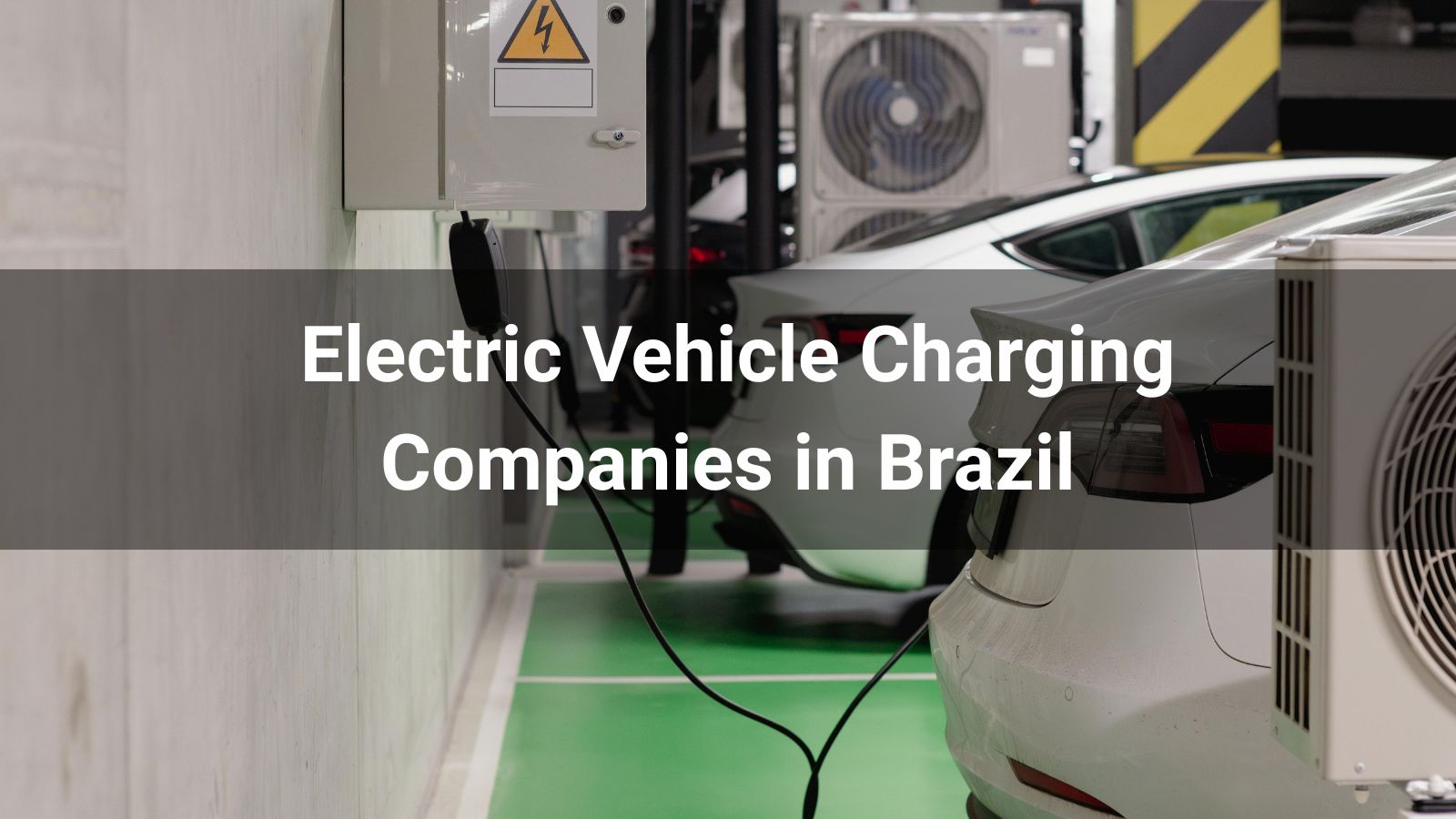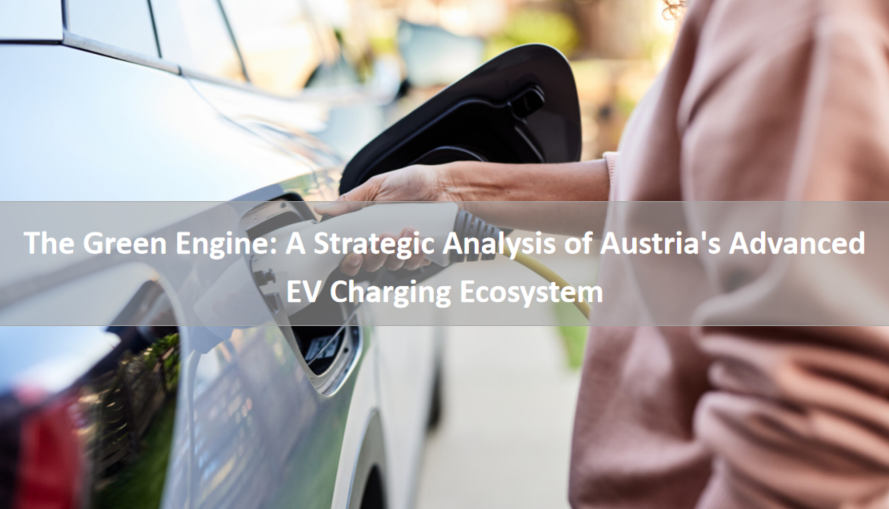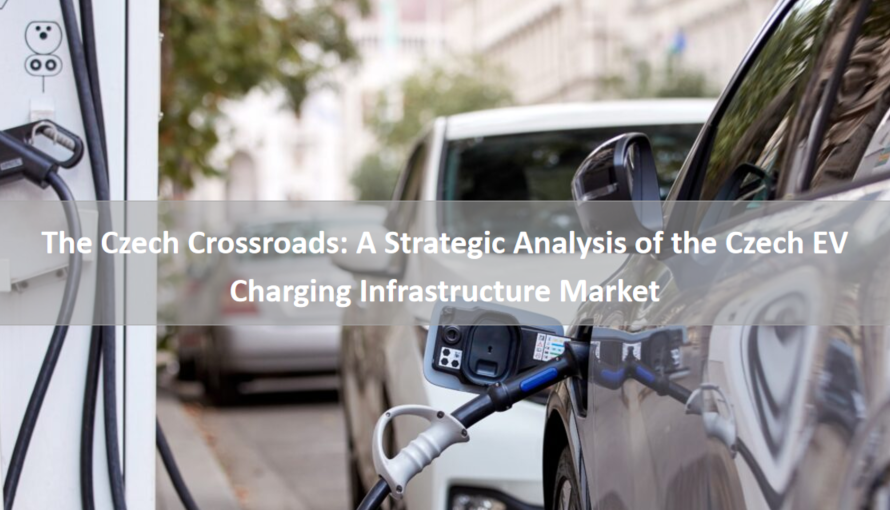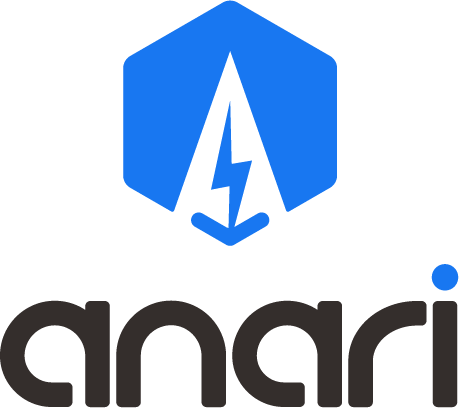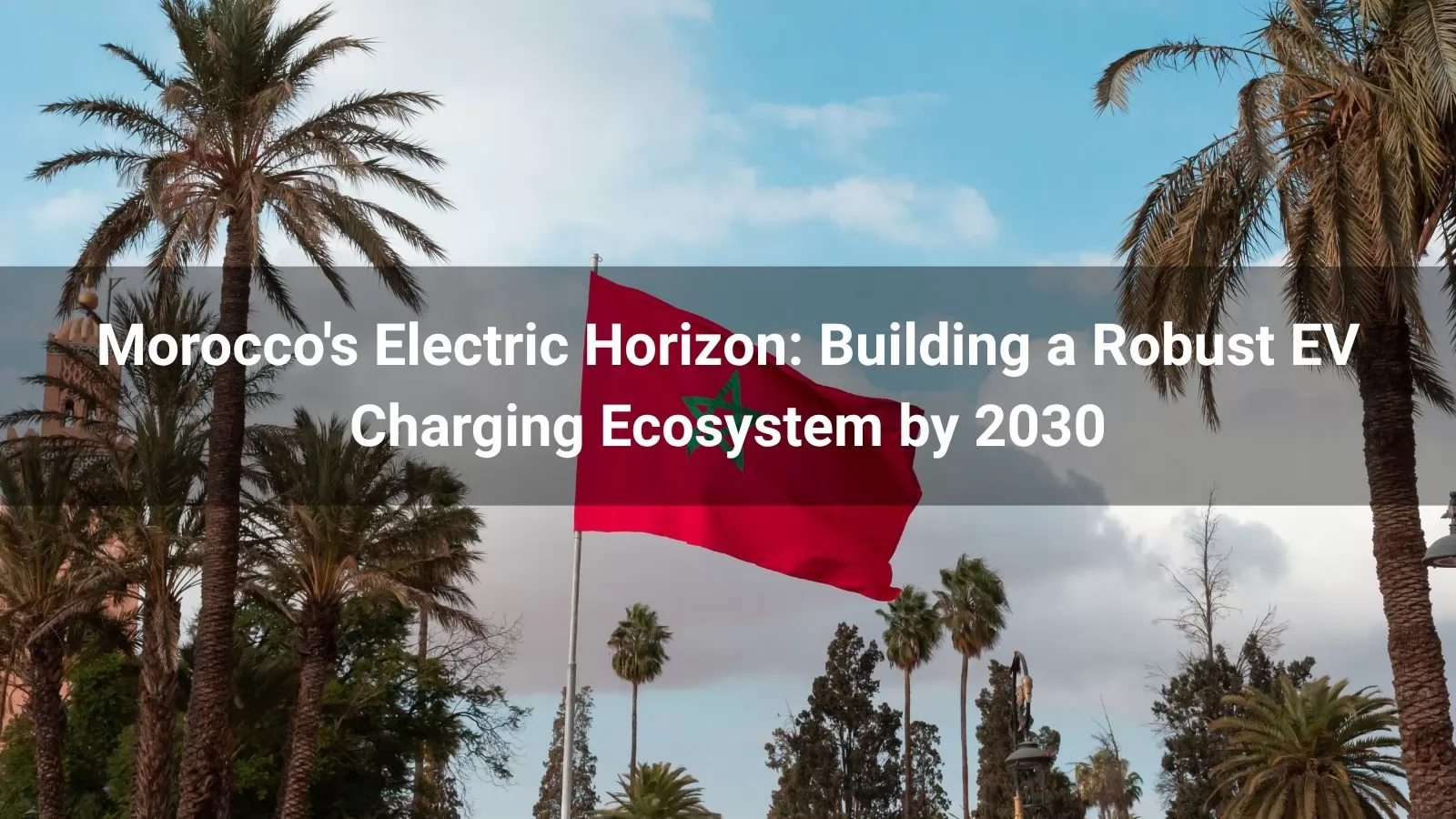
Executive Summary
Morocco is emerging as a regional leader in electric vehicle (EV) adoption, driven by ambitious national policies, a growing renewable energy sector, and strategic investments in charging infrastructure. This report analyzes the national policies, market size, development status, opportunities, and challenges of EV charging stations in Morocco, structured within a rigorous framework. National policies, aligned with the Kingdom’s 2030 sustainable development strategy, include tax incentives, fleet electrification mandates, and plans for 5,000 charging stations by 2028. The EV market is projected to grow from USD 0.15 billion in 2025 to USD 0.65 billion by 2030, with a CAGR of 33.9%, signaling robust demand for charging infrastructure. Development is progressing, with over 300 public charging points operational, supported by private-sector initiatives. Opportunities lie in leveraging Morocco’s renewable energy capacity, public-private partnerships, and its role as a regional automotive hub. Challenges, including grid constraints, high costs, and standardization issues, require targeted interventions. Strategic recommendations focus on accelerating infrastructure deployment, enhancing regulatory frameworks, and fostering consumer awareness to ensure Morocco’s leadership in sustainable mobility.
1. National Policies
Morocco’s national policies for EV charging infrastructure are progressive, leveraging tax incentives, fleet electrification mandates, and renewable energy integration to support the Kingdom’s 2030 sustainability goals. These policies create a conducive environment for infrastructure growth but require stronger regulatory frameworks to ensure scalability.
Morocco’s policy framework is designed to decarbonize transportation, aligning with its commitment to reduce greenhouse gas emissions by 45.5% by 2030 under the Paris Agreement. Key policy elements include:
-
Tax Incentives and Financial Support:
-
The Moroccan government offers reduced import taxes and VAT exemptions for EVs, lowering the cost of ownership and stimulating demand. These incentives mirror successful models in Chile, where tax reductions have boosted EV adoption.
-
The Moroccan Agency for Energy Efficiency (AMEE) provides subsidies for charging station installations, targeting both public and private entities. This aligns with global best practices, such as Austria’s subsidies of up to USD 32,320 for DC chargers.
-
These financial mechanisms drive EV uptake, indirectly increasing the need for charging infrastructure, particularly in urban centers like Casablanca and Rabat.
-
Fleet Electrification Mandates:
-
The Kingdom’s 2030 sustainable development strategy mandates that 30% of the state’s vehicle fleet be electric or hybrid by 2021, with plans to expand this target. This policy sets a precedent for public-sector leadership in EV adoption, encouraging private-sector participation.
-
Similar to Uruguay’s “Ruta Eléctrica” initiative, Morocco is prioritizing public fleet electrification to demonstrate viability and build consumer confidence, necessitating a robust charging network.
-
Infrastructure Development Plans:
-
In 2023, Moroccan companies announced plans to invest USD 140 million to install 5,000 charging stations by 2028, focusing on public locations and highways. This ambitious target aligns with the National Agency for Electricity and Water (ONEE) strategy to integrate charging infrastructure with renewable energy sources.
-
The Moroccan Agency for Solar Energy (MASEN) and the Institute of Research on Solar Energy and New Energies (IRESEN) are promoting smart grid solutions, such as vehicle-to-grid (V2G) systems, to optimize charging infrastructure.
-
Regulatory Framework Development:
-
Morocco is developing technical standards for charging stations, focusing on interoperability and safety, in line with global protocols like the Open Charge Point Protocol (OCPP). However, the regulatory framework remains incomplete, posing risks to scalability.
-
The lack of standardized connector types, such as CCS2 or CHAdeMO, could create compatibility issues, as seen in markets like Japan and the U.S., where varying standards complicate infrastructure deployment.
2. Market Size
Morocco’s EV market is poised for significant growth, projected to increase from USD 0.15 billion in 2025 to USD 0.65 billion by 2030 at a CAGR of 33.9%, driving demand for a robust charging infrastructure network. The charging station market, while nascent, is expected to expand rapidly to support this growth.
-
EV Market Growth:
-
Morocco’s EV market is in its early stages but growing rapidly, with an estimated 2,500 EVs in operation in 2025, projected to reach 25,000 by 2030. This growth is driven by government incentives, rising fuel costs, and increasing consumer awareness.
-
The projected CAGR of 33.9% aligns with regional trends, such as Ecuador’s 9.9% EV market penetration by 2025, and reflects Morocco’s ambition to lead in African electromobility.
-
Charging Infrastructure Market:
-
As of 2025, Morocco has approximately 300 public charging points, primarily Level 2 chargers, with plans for 5,000 by 2028. This expansion targets a ratio of 10 EVs per public charger, consistent with global benchmarks like China’s 10:1 ratio.
-
The global EV charging station market is projected to grow from USD 30.63 billion in 2025 to USD 257.33 billion by 2032 at a CAGR of 35.5%, providing a benchmark for Morocco’s potential growth.
-
Comparative Insights:
-
Morocco’s market size is smaller than mature markets like the U.S., where the charging infrastructure market is valued at USD 5.09 billion in 2025 with a CAGR of 30.3%. However, Morocco’s high growth rate indicates a faster trajectory relative to its current scale.
-
The focus on fast-charging infrastructure, as seen in the U.S. National Electric Vehicle Infrastructure (NEVI) program, provides a model for Morocco to prioritize high-capacity chargers along highways.
3. Development Status
Morocco’s EV charging infrastructure is developing steadily, with over 300 public charging points and private-sector investments driving progress. However, the network remains concentrated in urban areas, and grid integration challenges limit scalability.
-
Current Infrastructure Deployment:
-
Morocco has approximately 300 public charging points as of 2025, primarily Level 2 chargers in cities like Casablanca, Rabat, and Marrakech. These are supported by private operators like Chargemap and state-backed initiatives by ONEE.
-
The infrastructure is insufficient for widespread EV adoption, with a current ratio of 8 EVs per charger, below the global average of 10 EVs per charger. Expansion plans aim to address this gap by 2028.
-
Private-Sector Engagement:
-
Companies like Schneider Electric and local players are investing in charging infrastructure, with USD 140 million committed for 5,000 stations by 2028. These efforts align with global trends, such as Tesla’s Supercharger network expansion.
-
Public-private partnerships, similar to those in the U.S. with utilities like PSE&G, are critical for scaling infrastructure, particularly in rural areas.
-
Renewable Energy Integration:
-
Morocco’s renewable energy capacity, with 4.6 GW from solar and wind as of 2023, supports sustainable charging infrastructure. Projects like the Noor Solar Complex provide a foundation for co-locating chargers with renewable sources, reducing grid stress.
-
Smart grid initiatives, including V2G and IoT-enabled chargers, are being explored by IRESEN to enhance efficiency, mirroring China’s BYD megawatt chargers supported by battery storage.
-
Grid and Technological Constraints:
-
Morocco’s grid faces challenges from intermittent renewable energy and high demand, with 35% of national energy consumption attributed to transport. Uncoordinated charging could exacerbate peak loads, necessitating smart charging solutions.
-
The lack of universal connector standards (e.g., CCS2, CHAdeMO) poses compatibility risks, as seen globally, requiring regulatory action to ensure interoperability.
4. Opportunities
Morocco’s EV charging infrastructure market offers significant opportunities, driven by its renewable energy leadership, strategic geographic position, and growing automotive industry. Public-private partnerships and technological innovation can accelerate adoption and position Morocco as an African electromobility hub.
-
Renewable Energy Integration:
-
Morocco’s 52% renewable energy target by 2030, supported by projects like the 400 MW Midelt Solar Plant, enables sustainable charging infrastructure. Co-locating chargers with solar farms, as in China, reduces operational costs and grid dependency.
-
Smart charging and V2G systems can leverage Morocco’s renewable capacity to provide grid services, creating new revenue streams, as seen in Europe.
-
Public-Private Partnerships:
-
The USD 140 million investment by Moroccan companies for 5,000 charging stations highlights private-sector potential. Partnerships with global players like ABB or Webasto Group can bring expertise and scalability, similar to the U.S. NEVI program.
-
Collaboration with automotive manufacturers, such as Stellantis’ plant in Kenitra, can integrate charging solutions into production hubs, driving demand.
-
Strategic Geographic and Economic Position:
-
Morocco’s role as an automotive manufacturing hub, producing over 700,000 vehicles annually, positions it to lead in African EV production and infrastructure. This aligns with regional trends, such as Ecuador’s 9.9% EV market penetration.
-
Its proximity to Europe and trade routes supports the development of charging corridors for cross-border logistics, enhancing regional connectivity.
-
Technological Innovation:
-
IoT-enabled chargers and smart load management systems can optimize grid usage, as demonstrated in Germany’s high-capacity chargers. These technologies address Morocco’s grid constraints and enhance user experience.
-
Battery swapping, successful in China for heavy-duty vehicles, could be explored for commercial fleets, reducing charging time and infrastructure costs.
5. Challenges
Morocco’s EV charging infrastructure faces challenges, including grid capacity constraints, high installation costs, lack of standardization, and limited consumer awareness. Coordinated efforts are needed to ensure scalability and adoption.
-
Grid Capacity Constraints:
-
Morocco’s grid, with a capacity of 8.2 GW, struggles with intermittent renewable energy and high transport sector demand (35% of national energy). Uncoordinated charging could cause peak load issues, as noted in global studies.
-
Solutions like stationary battery storage, as used in China, require significant capital expenditure, posing a financial challenge for widespread adoption.
-
High Installation Costs:
-
Installing fast chargers, particularly in rural areas, is costly, with global estimates suggesting high capital expenditure for ultrafast stations. Morocco’s USD 140 million investment is substantial but may be insufficient for nationwide coverage.
-
Low initial utilization rates, due to limited EV adoption, reduce the economic viability of charging stations, as seen in early-stage markets like India.
-
Lack of Standardization:
-
Varying connector types (e.g., CCS2, CHAdeMO) create compatibility issues, as highlighted in global markets. Morocco’s nascent regulatory framework must address this to ensure seamless user access.
-
The absence of standardized protocols, like OCPP, could deter investment, as seen in Latin America’s fragmented infrastructure.
-
Limited Consumer Awareness:
-
Range anxiety and low awareness of EV benefits, noted in studies in Malaysia, are prevalent in Morocco, where EV adoption is still niche. Public education campaigns are critical to drive demand.
-
Socio-economic factors, such as high upfront EV costs, limit adoption, necessitating further incentives and financing models.
Strategic Recommendations
-
Accelerate Infrastructure Deployment:
-
Prioritize fast-charging stations along highways and urban centers, targeting a 10:1 EV-to-charger ratio by 2028. Leverage the USD 140 million investment to focus on high-traffic corridors.
-
Implement pilot projects in cities like Casablanca, integrating smart chargers with solar microgrids to demonstrate scalability.
-
Strengthen Regulatory Frameworks:
-
Finalize standards for connector types and interoperability, adopting global protocols like OCPP and ISO 15118. This will attract private investment and ensure user compatibility.
-
Establish pricing models and grid integration policies to mitigate peak load risks, drawing on Germany’s smart charging frameworks.
-
Foster Public-Private Partnerships:
-
Expand collaborations with global players like Schneider Electric and local automotive manufacturers to scale infrastructure. Offer tax breaks for private operators to offset costs.
-
Partner with MASEN to co-locate chargers with renewable energy projects, reducing operational costs and enhancing sustainability.
-
Enhance Consumer Awareness:
-
Launch campaigns to educate consumers on EV benefits and charger availability, using digital platforms like Chargemap. Address range anxiety through test drives and demonstrations.
-
Introduce financing models, such as leasing, to reduce upfront EV costs, drawing on China’s incentive programs.
-
Leverage Renewable Energy:
-
Integrate charging stations with solar and wind projects, using battery storage to manage peak loads. Explore V2G systems to provide grid services, as in Europe.
-
Pilot battery swapping for commercial fleets, leveraging China’s model to reduce charging times and infrastructure demands.
Conclusion
Morocco is well-positioned to lead Africa’s electromobility transition, supported by progressive policies, a growing EV market, and renewable energy leadership. The projected market growth to USD 0.65 billion by 2030 and plans for 5,000 charging stations by 2028 reflect ambitious goals, but challenges like grid constraints, high costs, and standardization issues must be addressed. By leveraging renewable energy, public-private partnerships, and technological innovation, Morocco can build a robust charging ecosystem, enhancing its role as a regional automotive hub and contributing to global sustainability goals.
Read more:
10 Best DC Fast Chargers 2025
Top 10 EV Charging Companies in the World 2025
Top 10 DC EV Charger Companies in China 2025


